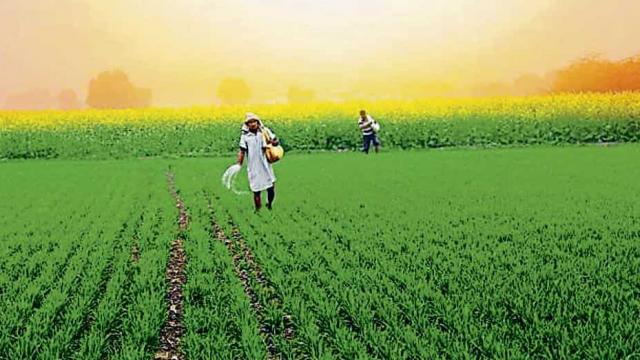Contents
What is it?
The yojana has three components, and these will accompany the existing programs of the Department of Food and Public Distribution for procurement of wheat, paddy and coarse grains and other cereals where procurement is at MSP now.
Introduction
- ‘PM AASHAwas approved in September 2018 by the Indian Government under the Ministry of Agriculture and Farmers Welfare.
- It is an umbrella scheme aimed at certaining well paid prices to the farmers for their produces.
- The Govt. is committed to realize the vision of doubling farmers’ income by 2022.
- Other existing yojanas of the DFPD are connected to wheat, paddy and other cereals and coarse grains. (By DFPD) and for Ministry of Textile will be continued.
- PM – AASHA is linked to pulses, oilseeds and copra.
- Madhya Pradesh is the only state which is executing Price Deficiency Payment Scheme under PM – ASTHA Yojana as on March 2019
Benefits
- The scheme generates the rural economy by motivating the farmers to earn better incomes.
- The yojana has three components that fill the gaps in the compensation mechanism and crops’ procurement.
- The Yojana benefits the farmers by providing them a Minimum Support Price for their crops.
- The PM Aasha yojana supports in the diversification of crops and lessen the stress on the water and soil.
Why is it important?
- The AASHA yojana attempt to address the gaps in the MSP system and give good returns to farmers. It also assure to stop the holes in the procurement structure through PDP.
- If successfully executed, the yojana will result in savings for the Centre. In the present physical procurement, govt. agencies end up significant leakages and wastage, stock-piling food grains, and sustain storage costs as well.
Price support Scheme
- Under this yojana, the Central Nodal Agencies will support of the physical procurement of Oil Seeds, Pulse, and other crops dynamically with the help of the state government.
- The India Food Corporation also takes up PSS Operations in adding to the already existing NAFED.
- Central Government will support the losses suffer due to the procurement.
Price Deficiency Payment Scheme
- This component under the PM Aasha will support all the oilseeds for which the Minimum Support Price (MSP) is notified.
- The Yojana had been formulated based on the Madhya Pradesh government’s BBY.
- The farmers will get all the payments under this yojana to their bank accounts without middlemen’s intervention.
- The union government will procure 25% of the marketable surplus of farmers for the listed crops.
- The PDPSdoes not inspire any physical procurement of crops.
- The Farmers are paid the difference between the MSP price and modal /Sale price on disposal in the notified market.
- Central Government do help the PDPS as per the norms.
- Crops covered: The Centre proposes to support all oilseeds.
- Benefitted farmers: Farmers who sell their crops in acknowledged mandis within the notified period can profit from it.
- Mode of payment: The difference between the MSP and actual modal /selling price will be straight way paid into the farmer’s bank account.
PPPS or Pilot of Private Procurement and Stockist Scheme
- The yojana aims to include the participation of private sectors in obtaining operations to strengthen the process.
- The chosen private agency do obtain the commodity at Minimum support price in the notified mandis during the notified time from the registered farmers following the PPSS Guidelines.
- The states are provided with an option to execute the yojana on pilot basis in selected APMCs with Private Sectors’ support.
- Crop covered: one or more crops of oilseeds.
- Areas covered: States will have the choice to roll out PPSSs in chosen districts and chosen Agricultural Produce Market Committee’s (APMC) of district as pilot basis.
Challenges of the Prime Minister Aasha Yojana
- Procurement Infrastructure is the most challenging for implementing this Yojanaas the focus on the procurement infrastructure in the yojana is deficient.
- The lack of an structured distribution system is one of the remarkable issues of taking this scheme to the next level.
- The scheme benefits the traders by permitting them to manipulate the prices.
- Procurement by private players is also a remarkable concern to the successful implementation of the yojana.
- There are some problems in funding as the NAFED has been in losses since 2012. Thus the financial instability of the NAFED is also a remarkable concern for the success of the yojana.
When was the govt. launched the Aasha Yojana in the nation?
It is in September 2018 by respected Prime Minister Mr. Narendra Modi.
What is the basic objective of implementing the PM AASHA Yojana?
It is to benefit the farmers by providing the Minimum Support Price to the selected crops.
Minimum support price is the minimum price paid to the farmers for their agricultural production.
What are components names in which the PM AASHA Yojana?
The Yojana is divided into three components: Pilot of Private Procurement & Stockist Scheme (PPSS), Price Support Scheme (PSC), and Price Deficiency Payment Scheme



